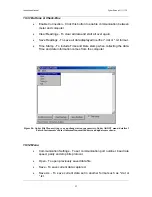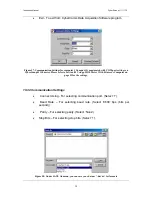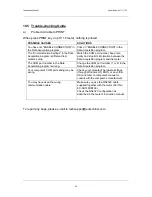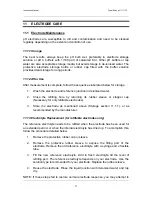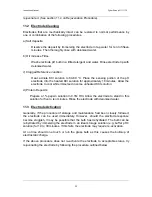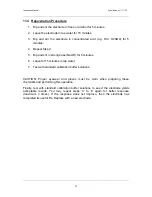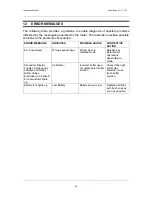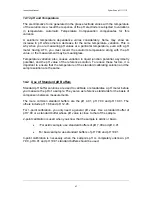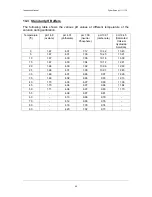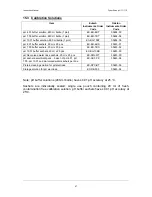
Instruction Manual
CyberScan pH 11 / 110
63
14.1.3 pH and Temperature
The electromotive force generated in the glass electrode varies with the temperature
of the solution. As a result the response of the pH electrode is subjected to variations
in temperature. Automatic Temperature Compensation compensates for this
variance.
A solution’s temperature dependence varies considerably. Some may show an
increase in pH while others a decrease for the same temperature variation. This is
why when you are measuring pH values at a particular temperature, even with a pH
meter having ATC, you must record the solution’s temperature along with the pH
value, or the measurement may be meaningless.
Temperature variation also causes variation in liquid junction potential, asymmetry
potential, and the pH value of the reference solution. To reduce these factors, it is
important to ensure that the temperature of the standard calibrating solution and the
sample solution are the same.
14.2 Use of Standard pH Buffers
Standard pH buffer solutions are used to calibrate or standardise a pH meter before
you measure the pH of a sample. They serve as reference standards for the basis of
comparison between measurements.
The more common standard buffers are the pH 4.01, pH 7.00 and pH 10.01. The
others include pH 1.68 and pH 12.45.
For 1-point calibration, you only need a general pH value. Use a standard buffer of
pH 7.00 or a standard buffer whose pH value is close to that of the sample.
2-point calibration is used when you know that the sample is acidic or basic.
•
• For acidic sample: use standard buffers of pH 7.00 and pH 4.01
•
For basic sample: use standard buffers of pH 7.00 and pH 10.01
3-point calibration is necessary when the sample’s pH is completely unknown. pH
7.00, pH 4.01 and pH 10.01 standard buffers should be used.





